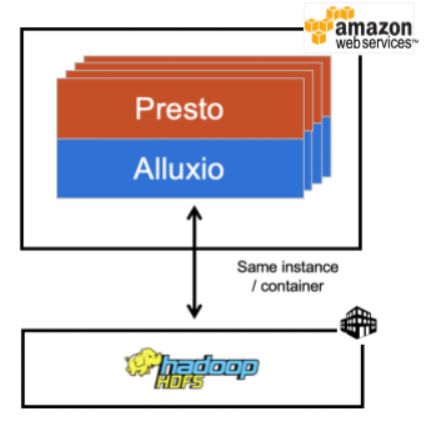Migrating Presto workloads from a fully on-premise environment to cloud infrastructure has numerous benefits, including alleviating resource contention and reducing costs by paying for computation resources on an on-demand basis. In the case of Presto running on data stored in HDFS, the separation of compute in the cloud and storage on-premises is apparent since Presto’s architecture enables the storage and compute components to operate independently. The critical issue in this hybrid environment of Presto in the cloud retrieving HDFS data from an on-premise environment is the network latency between the two clusters.
This crucial bottleneck severely limits performance of any workload since a significant portion of its time is spent transferring the requested data between networks that could be residing in geographically disparate locations. As a result, most companies copy their data into a cloud environment and maintain that duplicate data, also known as Lift and Shift. Companies with compliance and data sovereignty requirements may even prevent organizations from copying data into the cloud. This approach is not scalable and requires introducing a lot of manual effort to achieve reasonable results.
This article introduces Alluxio to serve as a data orchestration layer to help serve data to Presto efficiently, as opposed to either directly querying the distant HDFS cluster or manually providing a localized copy of the data to Presto in a cloud cluster.
Hybrid Cloud Architecture with Alluxio and Presto
In the following architecture diagram, both Presto and Alluxio processes are co-located in the cloud cluster. As far as Presto is concerned, it is querying for and writing data to Alluxio as if it were a co-located HDFS cluster. When Alluxio receives a request for data, it fetches the data from the remote HDFS cluster initially, but subsequent requests will be served directly from its cache.
When Presto sends data to be persisted into storage, Alluxio asynchronously writes data to HDFS, freeing the Presto workload from needing to wait for the remote write to complete. In both read and write scenarios, with the exception of the initial read, a Presto workload is able to run at the same, if not faster, performance as if it were in the same network as the HDFS cluster. Note that besides the deployment and configuration of Alluxio and establishing the connection between Presto and Alluxio, there is no additional configuration or other manual efforts needed to maintain the hybrid environment.

#hybrid-cloud #cloud-computing #cloud
